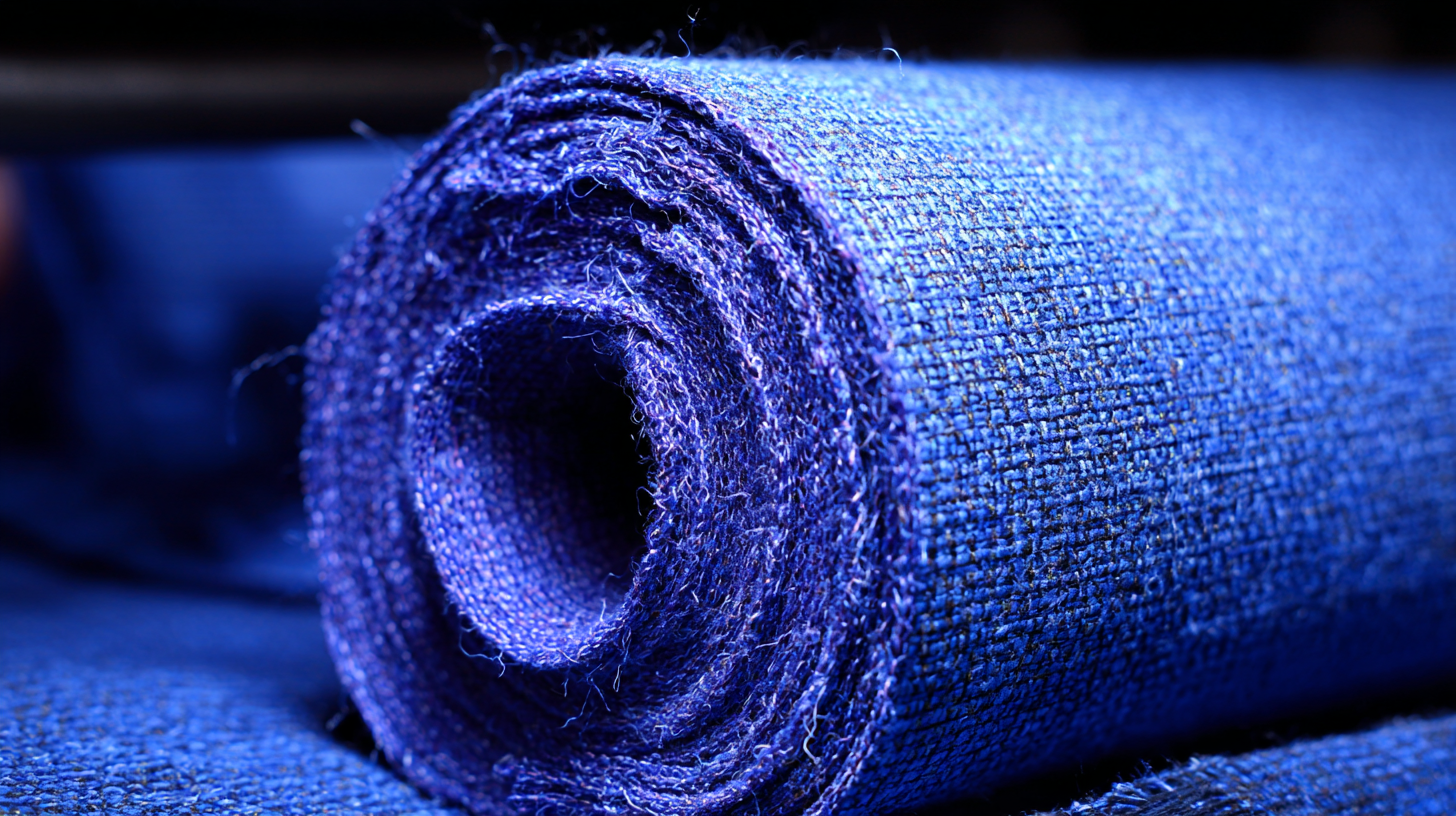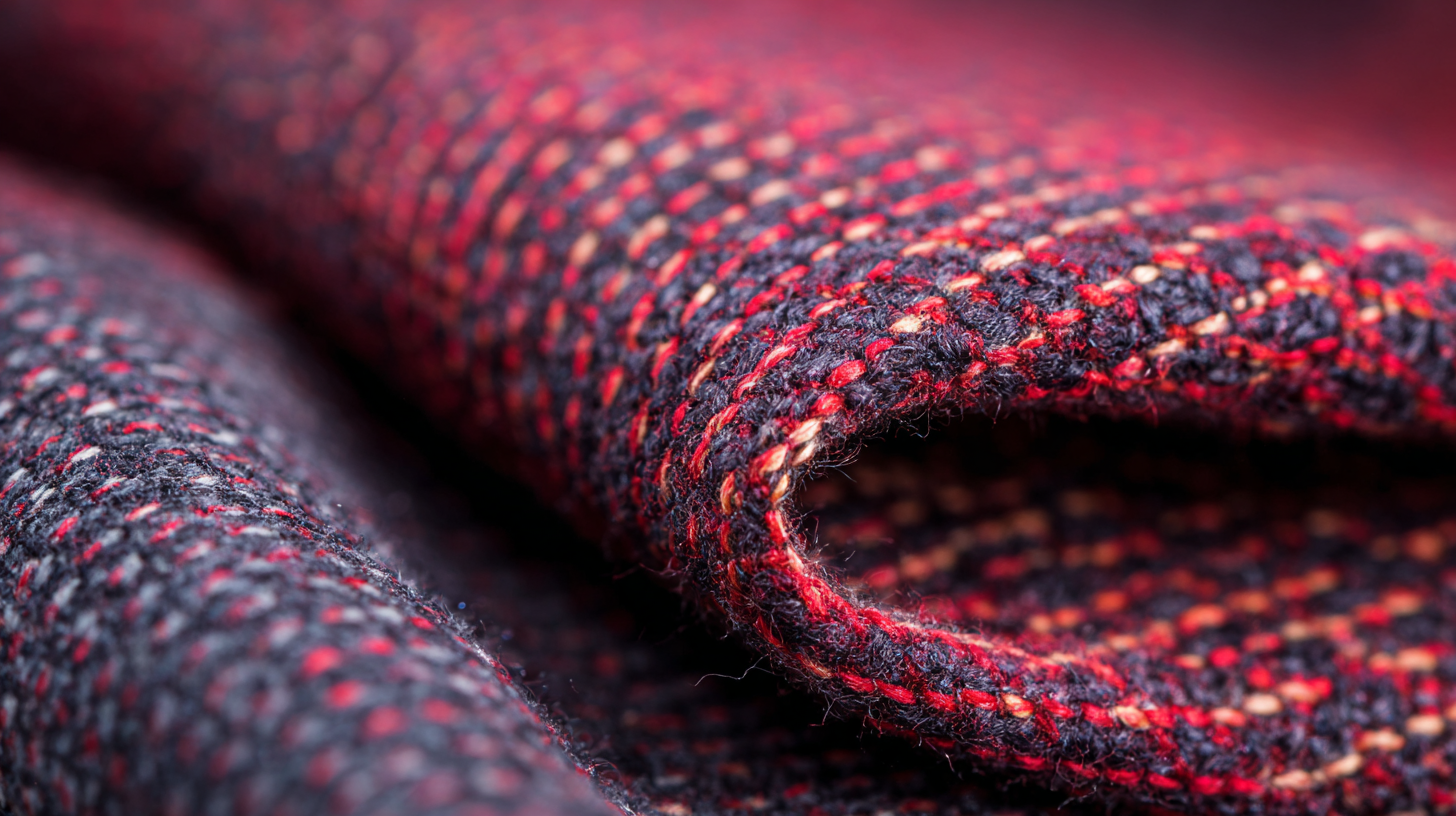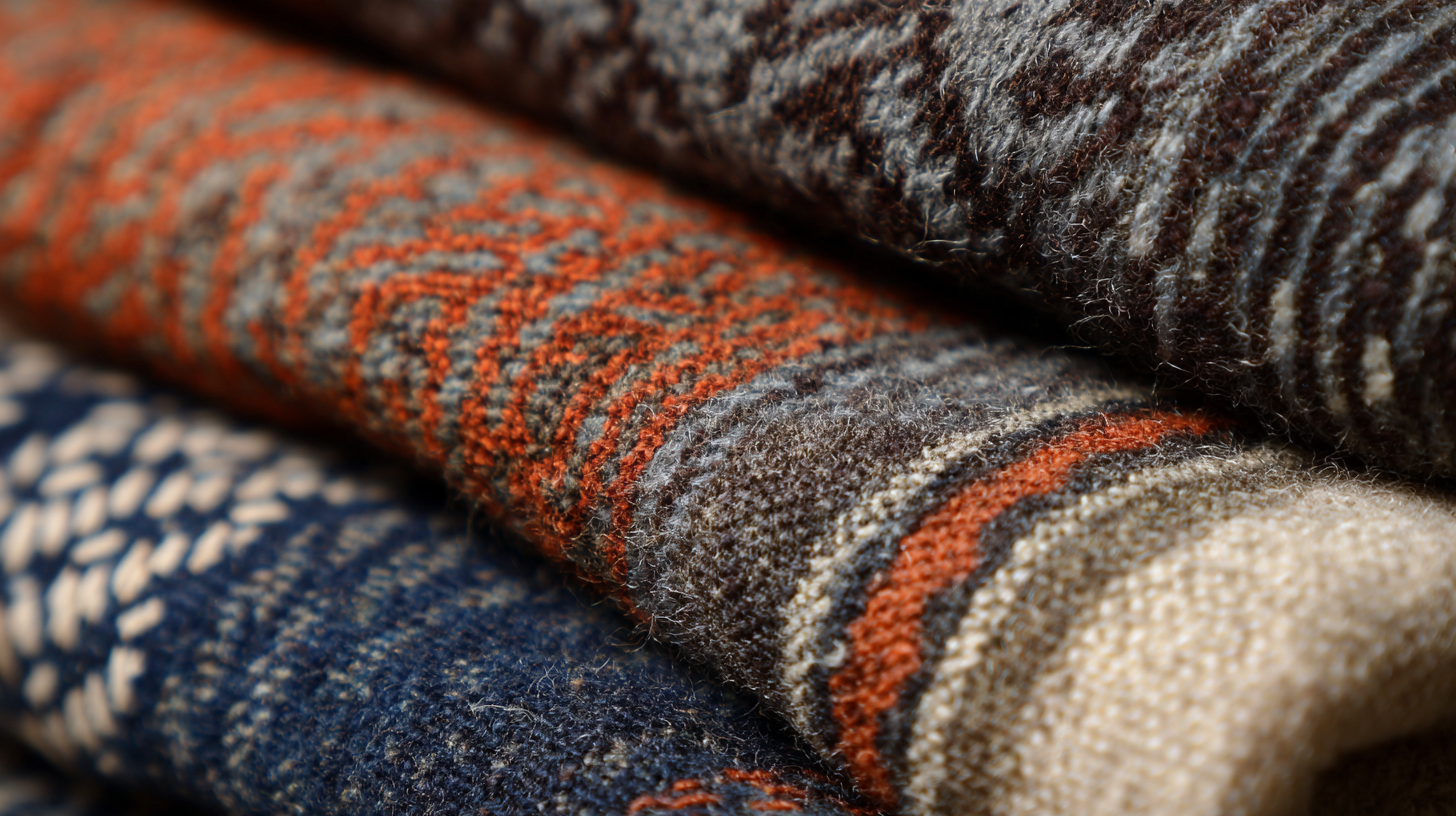The textile industry is continuously evolving, and one of the standout advancements in fabric technology is the emergence of Knitted Jacquard Fabric. This innovative fabric, characterized by its intricate patterns and versatile applications, has seen significant growth in demand. According to a recent report by Grand View Research, the global market for Jacquard fabrics is expected to witness a compound annual growth rate (CAGR) of 6.1% from 2023 to 2030, driven by the rising trend of personalized and pattern-rich textiles in fashion and home décor. The superior quality of Knitted Jacquard Fabric comes from its unique knitting techniques that allow for customized designs without compromising durability or comfort. As new manufacturing processes and sustainable practices take center stage, understanding the defining characteristics of this fabric will become crucial for industry stakeholders aiming to meet modern consumer demands.

Jacquard fabric is a game-changer in the textile industry, renowned for its intricate patterns and superior quality. What truly makes this fabric stand out in modern textiles is its unique weaving technique, allowing for complex designs that are both aesthetically pleasing and durable. Unlike traditional fabrics where patterns are printed on, Jacquard uses a loom to weave the design directly into the fabric, resulting in a product that maintains its elegance over time without fading or peeling.
When selecting Jacquard fabric, consider its weight and texture, as these can significantly affect the final appearance and functionality of your project. For instance, a heavier Jacquard may provide a more luxurious feel, ideal for upholstery, while a lighter option is perfect for clothing. Additionally, pay attention to the fiber content; natural fibers like cotton or silk not only contribute to the fabric's breathability but also enhance its overall quality.
Another tip is to appreciate the versatility of Jacquard fabric. Whether you're creating a statement piece or a subtle accent, this textile can bring depth and richness to any design. Don't hesitate to experiment with color combinations and scale of patterns to match your unique style. Embracing Jacquard fabric in your work can elevate your projects and offer endless creative possibilities.
This chart displays the key quality characteristics of the best knitted jacquard fabric, showcasing ratings based on criteria such as durability, design complexity, and comfort. Each characteristic is rated on a scale from 1 to 10, highlighting what makes jacquard fabric stand out in modern textiles.
When it comes to identifying high-quality knitted jacquard fabric, several key characteristics stand out. Firstly, the intricacy of the pattern is a vital indicator; a superior jacquard fabric boasts complex designs that are woven directly into the material rather than printed on the surface. This ensures durability, as the patterns will not fade or wear off over time. The precision of the weave not only enhances aesthetic appeal but also contributes to the fabric's overall strength and longevity.
Another essential characteristic is the quality of the yarn used. High-quality knitted jacquard fabric is typically made from fine materials such as cotton, wool, or synthetic fibers that enhance softness and drape. These materials should be tightly spun to prevent pilling and snagging, ensuring that the fabric retains its luxurious feel even after repeated use and washing. Additionally, high-quality jacquard fabrics feature a consistent thickness throughout, providing a smooth texture that feels comfortable against the skin.
Lastly, the weight of the fabric plays a crucial role in its quality. A heavier-weight jacquard is often more durable and suitable for a variety of applications, from high-end fashion to home textiles. When evaluating knitted jacquard fabric, it's essential to consider these characteristics to ensure you're investing in a product that promises both beauty and longevity in the textile industry.

The durability of Jacquard fabrics is increasingly scrutinized in the textile industry, especially with the growing focus on sustainability and environmental impact. Recent studies have shown that textile reuse and recycling significantly reduce environmental harm compared to conventional methods such as incineration. In this context, high-quality Jacquard fabrics not only need to meet aesthetic standards but also stringent durability requirements, ensuring they withstand wear and tear over time while facilitating sustainable practices.

Innovations in testing standards for Jacquard fabrics play a crucial role in assessing their durability. With advancements in smart fabrics and the integration of electronic components, the complexity of testing methods is escalating. Manufacturers are now tasked with developing robust standards that consider both the textile properties and the functionality of these e-textiles. As industry leaders embrace CAD software for jacquard development, the integration of performance-driven textiles is becoming more prevalent, driving forward a new era in which durability and sustainability coalesce in fabric design.
The textile industry has seen significant advancements in jacquard weaving techniques, which have profoundly influenced the quality and versatility of knitted jacquard fabric. Innovations such as digital jacquard weaving have streamlined production processes, enabling manufacturers to create intricate patterns with unparalleled precision. According to a report by MarketsandMarkets, the global jacquard fabric market is projected to reach $7.89 billion by 2025, highlighting the growing demand for high-quality, customizable textiles that modern weaving technology can satisfy.
When investing in jacquard fabric, consider the type of fibers used in the weaving process. Natural fibers, such as cotton and silk, not only offer superior breathability and comfort but also enhance the fabric's overall aesthetic appeal. On the other hand, synthetic fibers, like polyester, can contribute to durability and easy maintenance. Choosing the right combination can elevate the fabric's performance for various applications, from fashion to home decor.
Tip: Always prioritize the weave density when selecting jacquard fabric. A higher density often indicates better quality and longevity, as it enhances the fabric's resilience against wear and tear. Additionally, explore the potential of eco-friendly fibers in jacquard production, as sustainability is becoming increasingly vital in consumer choices.
Sustainable practices in the production of Jacquard fabrics are becoming increasingly essential in today’s textile industry. The process begins with sourcing eco-friendly materials, such as organic cotton or recycled fibers, which significantly reduces the environmental impact. Additionally, opting for water-efficient dyeing methods can diminish water wastage and pollution, making the production process more sustainable. By prioritizing these materials and techniques, manufacturers can deliver high-quality fabrics while being mindful of their ecological footprint.
When producing Jacquard fabrics, consider implementing these tips for sustainability. First, focus on using low-impact dyes and natural finishes that are less detrimental to the environment. Second, explore partnerships with local farms and suppliers who practice regenerative agriculture, ensuring that your raw materials support sustainable farming practices. Lastly, invest in energy-efficient machinery that minimizes energy consumption during the weaving process, further enhancing the sustainability of your production.
By integrating these sustainable practices, the textile industry can enhance the quality and appeal of Jacquard fabrics while promoting an environmentally responsible approach. This not only meets the growing demand for eco-friendly textiles but also sets a standard for quality that aligns with modern consumer values.